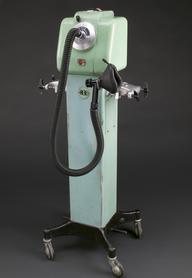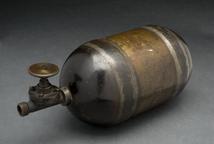

Butterfly needle
- Made:
- 1901-2000

Butterfly needle, 1900-99.
Butterfly needles, take their name from their shape. A very thin needle has two flexible ‘wings’ which are used to hold the needle. Inserted into a vein, the needle is attached to a thin flexible, plastic tube. This tube can be used to take blood samples or be attached to more tubing or syringes for intravenous access to give fluids or medications. If remaining in place, the needle is taped down.
Butterfly needles are especially useful for people with small veins, including children. These youngest of patients were the inspiration for the needles. In the 1950s a team including Dr John Court, a physician at the Royal Children’s Hospital, Melbourne, Australia, developed a series of prototypes that became the ‘winged needle device’. The first makers were an Australian raincoat manufacturer, Plastalon but soon became made and used worldwide. Now single-use only, originally these were sterilised for re-use using gamma radiation as heat would have melted the plastic.
Details
- Category:
- Anaesthesiology
- Object Number:
- 1999-807
- Materials:
- plastic (unidentified)
- Measurements:
-
overall: 45 x 70 mm
- type:
- butterfly needle
- credit:
- Gilston, Alan




